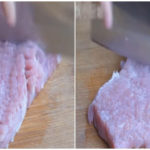Summer is a scorching season, so for family meals, most people choose to boil food for easy enjoyment. Boiled meats can be prepared in various ways, which are quick and easy to eat. However, many people still do not know how to boil different types of meat to make them delicious, tender, fragrant, and without any smell.
To make the most delicious boiled meat dishes, you can refer to the following methods:
1. PORK
Any part of the pork can be boiled, but for the best taste and tenderness, it is recommended to choose pork belly and pork leg…
Before boiling, rinse the meat thoroughly and soak it in water for a while to reduce excess blood and make the boiled meat tastier.
When boiling, you can add a crushed onion to the meat. The onion will help to eliminate the odor of the meat. Additionally, after the meat is cooked, you can add a few drops of white wine and then drain the water. This will remove the unpleasant smell from the meat, and the food will become more flavorful. Skimming off the foam regularly also helps to keep the meat clean and reduce any odor.
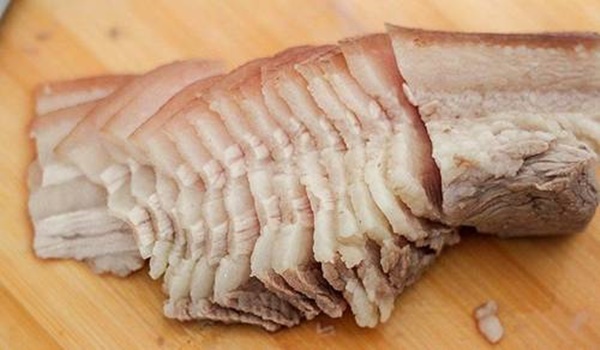
2. PORK STOMACH
How to clean the pork stomach:
Method 1: The most common way is to use vinegar and lemon, especially if you can get some sour ferment to squeeze the stomach, it will be very clean and eliminate the odor. Turn the stomach inside out, squeeze the folds carefully, and use a knife to clean the clinging parts on the stomach. Rinse it a few times until the stomach is clean.
Method 2: You can also boil water in a pot, add ginger and lemongrass, bring to a boil, then dip the stomach in for a few seconds. Then rinse the stomach thoroughly under cold water.
How to boil the pork stomach to make it fragrant:
– Place the cleaned pork stomach in a pot and fill it with water. To make the pork stomach fragrant and tastier, you should add a spoonful of salt, a crushed ginger, a spoonful of vinegar, and a little wine to the pot while boiling.
– Cover the pot and let it cook for about 20 minutes. Open the pot and test the tenderness of the stomach with a skewer. If it is cooked, you can remove it. The cooking time is about 7-10 minutes, depending on the amount of stomach.
Prepare a bowl of boiling water to cool down. Add a few drops of lime juice, then add the boiled stomach (the water should cover the stomach). This method will make the stomach white and crispy.
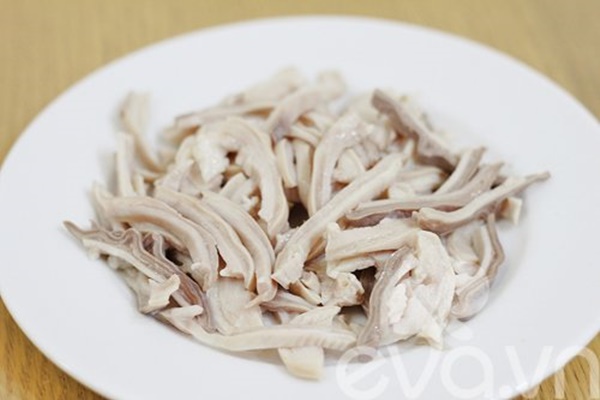
3. PIG’S HEART
– Choosing pig’s heart:
It is best to visit the market in the morning to buy fresh pig’s heart. At this time, the heart will be fresher. Besides, you should choose the front parts of the heart because they are thicker and more tender. Choose parts of the heart that are round and have white liquid inside.
Avoid choosing thin sections of the heart that have a yellow color inside as they will be bitter and tough.
– Preparing the pig’s heart:
When you have selected good pieces of fresh heart, lightly season with salt. Don’t season too much or scratch too hard as it will make the heart tough and less tasty. After seasoning with salt, rinse and drain the liquid inside, then rinse it again.
– Boiling the heart:
Bring a pot of water to a boil and then add the heart. When the water boils again, cook for an additional 2-3 minutes, then remove the heart. You can cut a small piece of the heart to check if it is cooked. The cooking time is about 7-10 minutes, depending on the amount of heart.
Prepare a bowl of boiling water to cool down. Add a few slices of ginger and a few pieces of green onions to the water. This will make the heart more fragrant.
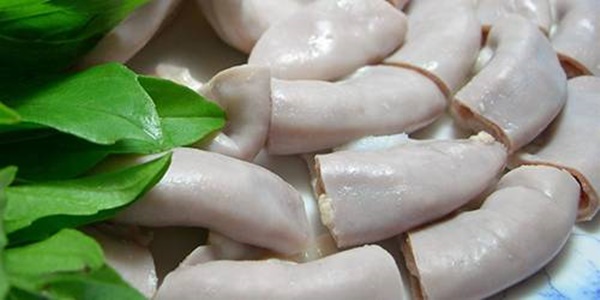
4. PIG’S INTESTINES
Clean the pig’s intestines by rinsing them several times with water, then squeezing out the water. When rinsing, use warm water because warm water can help remove internal impurities more effectively.
Then, put flour, vinegar, and intestines into a bowl, knead them evenly by hand. Knead for about 2-3 minutes, then turn the inside of the intestines out and continue kneading for 2-3 minutes. Then wash the intestines with warm water several times. This way, the intestines will be clean.
Put the pig’s intestines into a pot, add cold water, and then boil until cooked. Add a few slices of ginger and a few pieces of onion during boiling to make it more fragrant.
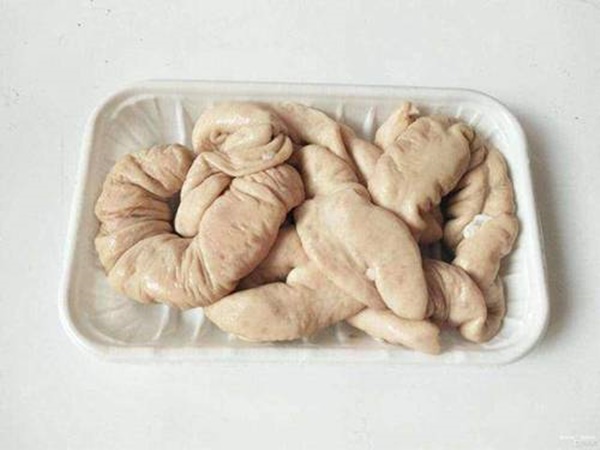
5. DUCK MEAT
Duck meat often has a strong odor, so before boiling, you need to clean the duck feathers thoroughly. Pay attention to removing all the sebaceous glands from the duck’s tail. If you forget this step, when it is boiled, some sebum will produce a strong odor.
After that, season the duck with a little salt, pepper, crushed ginger, and a small amount of white wine. Let it sit for about 30 minutes, then rinse thoroughly and drain. Boil the duck. You can add a small piece of ginger or lemongrass to the pot while boiling. This will remove the unpleasant smell from the duck, and your duck dish will always be delicious and attractive.
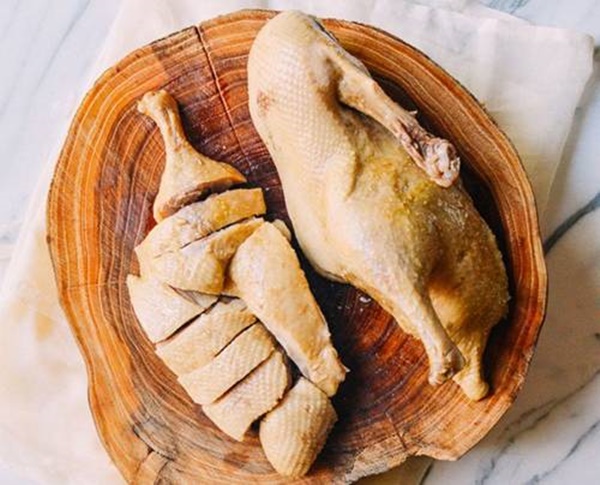
6. BEEF
Boiling is a suitable method for beef tenderloin or if you prefer beef rolls. The process is quite simple:
Grill a ginger until tender, then remove the burned skin, crush the ginger and rub it on the beef, then rinse it off with cold water. Finally, boil the beef until cooked, and then slice it according to your preference and enjoy.
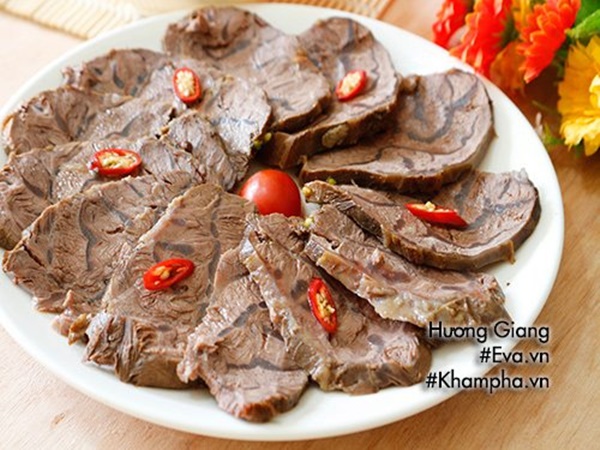
7. GOAT MEAT
To remove the smell of goat meat, you can cut the meat into pieces and put them in hot water, adding a little rice wine to it. The ratio is as follows: for every 500g of goat meat, add 500g of water and 25g of rice wine. Skim off the water when it boils, and the goat meat will be odorless.

8. CHICKEN MEAT
Boiling chicken:
Put the chicken in a pot and fill it with cold water to cover the chicken. Bring the water to a rolling boil. Don’t let it boil vigorously, as the chicken skin can easily crack. Leave it to boil for about 7 – 8 minutes, skimming off the foam regularly.
Grill 1 piece of ginger, 1 onion, then crush them, and add them to the pot of boiling water with the chicken (you can skip this step if you don’t want to use ginger and onion). If it is young chicken, continue boiling for 5 more minutes. If it is older chicken, boil for an additional 10 minutes. Then, turn off the heat, cover the pot, and let the chicken soak in the water for 5 more minutes.
To check if the chicken is cooked, you can use a skewer to poke the chicken. If the skewer easily pierces through the chicken and the juice is not pink, then it is cooked.

Tips for crispy and golden chicken skin:
To make the chicken skin crispy, as soon as you remove the chicken from the boiling water, immediately put it in cold water, and when it has cooled completely, take it out and let it drain. Furthermore, soaking the chicken in cold water helps the meat to become firm and easy to chop and arrange without breaking apart.
Crush a little turmeric and squeeze out the juice. Mix the juice with the chicken fat that has been fried until golden. When the chicken is cool and drained, spread a thin layer of this mixture evenly on the skin of the chicken. This guarantees that the chicken skin will be golden and shiny.
Source: Phụ Nữ Việt Nam
Revealing the Secrets of Delicious Cooking by a Professional Chef
Are you looking to become the master chef of your home kitchen? Ði?n máy XANH is here to help with their tips on how to serve up restaurant-level dishes, from proper cooking methods for meat and grilling, to baking delicious cakes. So pick up your apron and get ready to show off your culinary prowess!



























